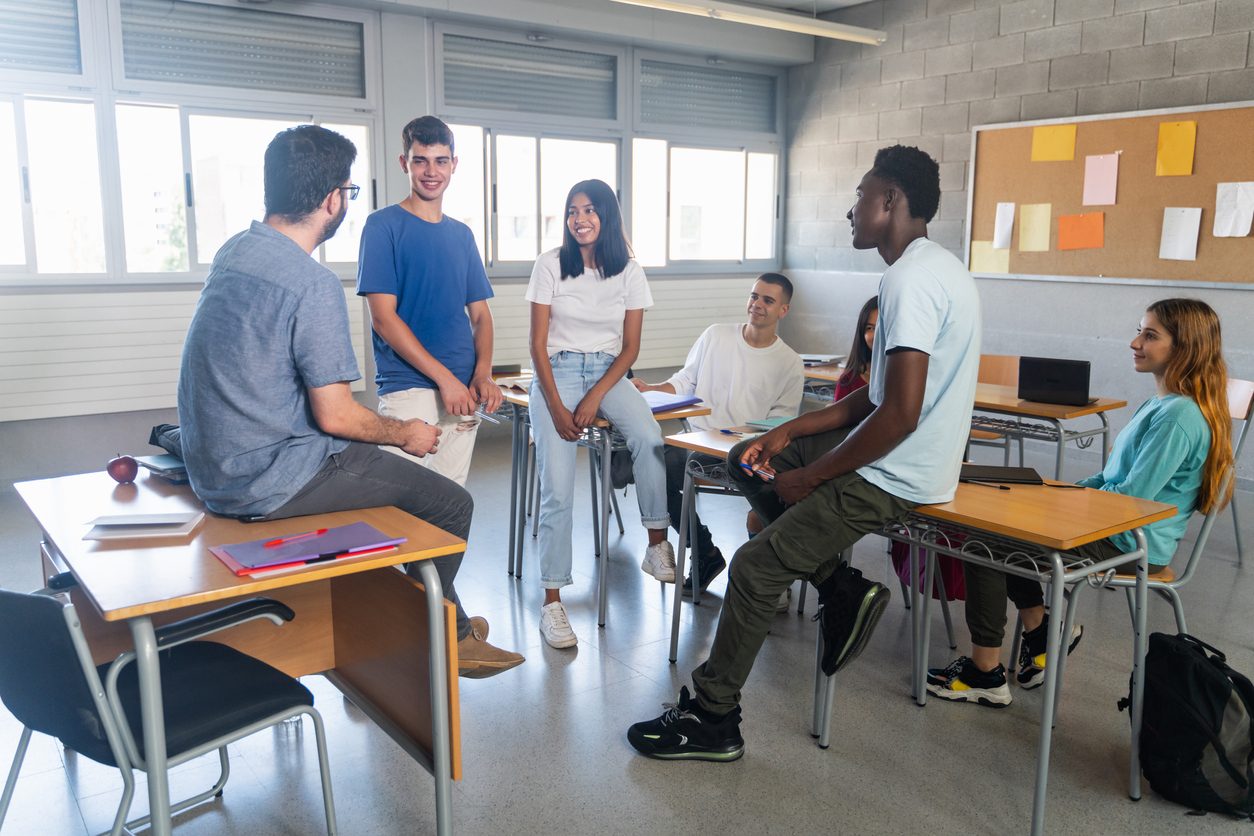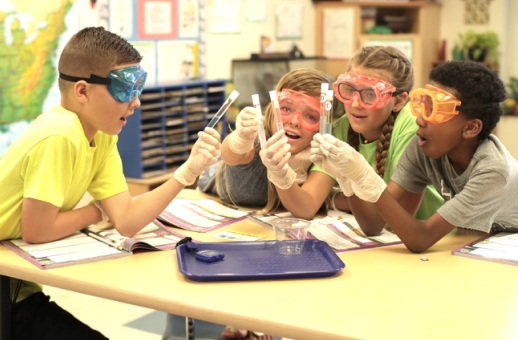September 19, 2023 10:30 am
Trusting Inquiry
By allowing students space to think (deliberate ideas), talk (collaborate around ideas), and do (produce ideas), teachers can build a culture of classroom trust with their students that accelerates inquiry-based learning in the classroom.
It is one thing to build an inquiry-based curriculum, it is quite another to make an inquiry come to life in a classroom. If curriculum is a recipe, then how do teachers move from being line-cooks to inquiry chefs? How do they get students to eat their inquiry vegetables and keep coming back for more? What makes an inquiry rise in one classroom and flop in another? What is inquiry’s instructional secret sauce? I will argue that trust is how inquiry teachers “kick it up a notch”!
Why trust? Recently, I co-directed a documentary film project, Making Inquiry Possible (MIP) featuring four films that explore how innovative teachers, schools, and districts are shifting to inquiry-based instruction. At the core of each documentary is the question: What does it take to make inquiry possible in social studies? The answer has become unmistakable: trust. Like a song that gets stuck, once I started to hear it, I couldn’t un-hear it.
For example, when I asked one of the teachers in the project how inquiry had changed his teaching, he responded this way:
So my role as a teacher has changed. What I’ve noticed with the use of compelling questions and using IDM in my classroom it is absolutely incumbent on the student to answer that question for themselves. Now that doesn’t seem wild when we say that, but in the moment of teaching, many of our students have been accustomed to being able to find an answer, rather than simply create one…
Do you hear it? Did you notice how he needs to trust the students to answer the compelling question “for themselves”?Let’s listen again. When I asked a teacher about scaffolding inquiry, this was the response:
Students need enough support in order for them to even put the pieces together. What I’ve noticed is that it’s almost like holding an egg. If you grip it too tightly, it’s gonna break. But if you truncate everything too much for the student, what you get on the other end is, is simply just not a robust answer. It kills the process. So because of that, I have to be both the support, but also have to like, kick the kid out in the pasture a little bit to kind of figure things out on their own.
Surely you heard it this time — how the teacher needs to hold (or trust) the inquiry “egg” by not gripping too tight? Or how he needs to “kick the kid out in the pasture a little bit to figure things out on their own” as an act of pedagogical trust? While I would never suggest or condone literally kicking a kid, metaphorically (and only metaphorically), it does make sense for inquiry. Students need space to figure things out in an inquiry. Teachers need to trust students and give them that space. And, students need to trust teachers to make that space meaningful and to be there when they lose their way. Sometimes that space is uncomfortable and teachers will need to nurture students and scaffold the process so that they can ultimately embrace that intellectual freedom.
This theme of trust surfaced in every facet of the film project and further deepened a curiosity about trust and its relationship to inquiry. Trust is now popping up in every conversation with an inquiry teacher and in every classroom observation. It has been a Eureka! moment. But, trust is one of those words that is kind of squishy and a platitude like, “just trust your students” seems really unsatisfying and possibly frustrating for teachers wanting to go deeper into inquiry-based instruction. So, trust me, you are going to want to read on!
Along with my C3 Teachers colleagues, S.G. Grant and John Lee, we have landed on three key inquiry processes that build a culture of trust in the classroom: deliberation, collaboration, and production.

Deliberation involves instructional practices that allow students to listen to each other’s ideas and speak about their own. This might include a Harkness Discussion, Think-Pair-Share, Take a Stand debate, or Socratic Discussion. These types of deliberative experiences engender respect for others and an appreciation for a pluralistic democracy where people hold different perspectives on life. Deliberative exercises build trust by fostering empathy between students and between teacher and students because they show that teachers trust their students to think about big ideas.
Collaboration involves instructional practices that allow students to work with others to problem solve through teamwork. This might include a Jigsaw, Question Formulation Technique (QFT) exercise, or Structured Academic Controversy. During collaborative experiences, students negotiate with others and learn to respect other ways of knowing and doing. If a task is “group worthy”, students learn to value team member’s strengths and to value their own contributions to the whole. These kinds of experiences build trust by creating interdependence between students and demonstrating that a teacher trusts their students to work with others.


Production involves instructional practices that allow students to construct meaningful work. This could include an evidentiary argument or a project (Public Service Announcement, Museum exhibit) or it could include important formative work like a map, timeline, or T-Chart. When students produce work, they risk putting their ideas out there and cultivate agency in the process. Healthy inquiry cultures allow students to explore frontiers and create forgiving spaces to learn and grow. In doing so, they build classroom trust.
By allowing students space to think (deliberate ideas), talk (collaborate around ideas), and do (produce ideas), teachers build a culture of classroom trust with their students that engenders key attitudes of empathy, interdependence, and agency that can accelerate inquiry-based learning in the classroom. While these processes and attributes are not exclusive to social studies, they do connect deeply to citizenship and our role in preparing students for civic life. “Bam!” Now, we are really cooking with (inquiry) gas!
So, this year, as you think about strategies that you use in or outside of an inquiry experience, spare a thought for trust. Consider: How am I creating a trustworthy classroom? How do I show my students that I trust them? When do students learn to trust each other? What strategies really accentuate trust and what differences do they make in students’ attitudes toward my class? How does a trustworthy classroom accelerate learning? And, finally, to my fellow inquiry travelers, let’s keep trusting inquiry!
For your corkboard
Print and pin Kathy’s guide to building trust in an inquiry classroom.
About the Author – Dr. Kathy Swan
Professor, University of Kentucky, C3 Framework Lead Author
Kathy Swan is a professor of curriculum and instruction at the University of Kentucky. Kathy was awarded UKY’s Great Teacher Award in 2021 and has been a four-time recipient of the National Technology Leadership Award in Social Studies Education, innovating with inquiry-based curricula. Dr. Swan served as the project director and lead writer of the College, Career, and Civic Life Framework for Social Studies State Standards (2013), the national standards for social studies. She has co-written a number of best-selling books including Inquiry-Based Practice in Social Studies Education: The Inquiry Design Model (2017); The Inquiry Design Model: Building Inquiries in Social Studies (2018), and; Blueprinting an Inquiry-Based Curriculum: Planning with the Inquiry Design Model (2019).



